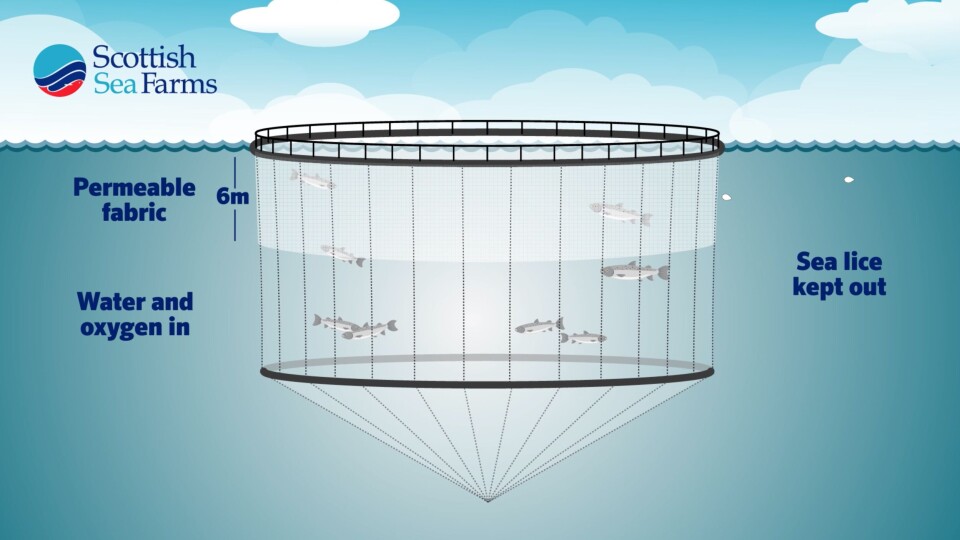
SSF rolls out lice skirts after Shetland success
Scottish Sea Farms is seeing one of its current crops in Shetland outperform all previous years following the introduction of lice skirts - and is now rolling out the skirts to 11 more sites as a result.
The new skirts, which are six metres deep, were first introduced at the company’s farm at Slocka, Ronas Voe on Shetland in May 2017. In the nine months since, sea lice levels have successfully remained below the official threshold, and the salmon are showing strong growth and biological performance.
Such has been the effectiveness of the skirts that Scottish Sea Farms has now invested over £800,000 with two Scottish suppliers – William Milne Tarpaulins in Aberdeen and W&J Knox in Ayrshire – in order to roll-out similar protection to 11 of its other farms in Shetland and the west coast.
Synchronise use of skirts
The company is also working with neighbouring salmon growers to synchronise use of the skirts, as part of a farm management agreement for those same areas.

Jim Gallagher, managing director of Scottish Sea Farms, said: “We strive, wherever possible, to replicate the natural conditions that salmon are known to thrive in. As any farmer will understand however, this comes with its own risks as the marine environment presents new challenges all the time. We are continually exploring and investing in new ways of dealing with these challenges, and it’s hugely encouraging to see positive early results such as these at our trial project in Shetland.”
This latest advance is part of a wider £11.8m investment in 2017 by the company to enhance the health and welfare of its salmon – over 85% of which is being spent on non-medicinal approaches.
Doubling use of cleaner fish
In terms of controlling the sea lice challenge specifically, key areas of investment include:
- More than doubling the use of cleaner fish, 76% of which are now from farmed origin, keeping the company on track to use farmed-only stocks by 2020
- Developing a new net cleaning pressure pump to keep pens free from marine build-up, simultaneously enhancing fish health and welfare and increasing the effectiveness of cleaner fish
- Ongoing investment to increase understanding of cleaner fish, with the insights gleaned being shared with the wider industry
- Co-funding new Thermolicer technology.
In turn, the need to administer medicines has significantly reduced, with six of the company’s farms requiring no medicinal sea lice interventions at all during 2017.
Planktonic organisms
With the United Nations reporting that the last three years were the hottest on record, and Scotland’s rising sea temperatures resulting in new planktonic organisms that are potentially harmful to the health of fish gills, SSF has also spent around £200,000 on state-of-the-art environmental data monitoring equipment, as well as more than £260,000 on a new underwater camera system.
Ralph Bickerdike, SSF's head of fish health and welfare, said: “Even a seemingly slight increase in sea water temperatures of 0.5 degrees can have an impact on the marine environment.
"This new data monitoring equipment is enabling real-time analysis of key markers such as salinity and oxygen concentration, helping us to make informed decisions to maintain high standards of welfare for the fish under our care.
“Complementing this, the new underwater cameras enable us to observe the fish within the pens and respond swiftly should there be any changes in their natural behaviour.”























































